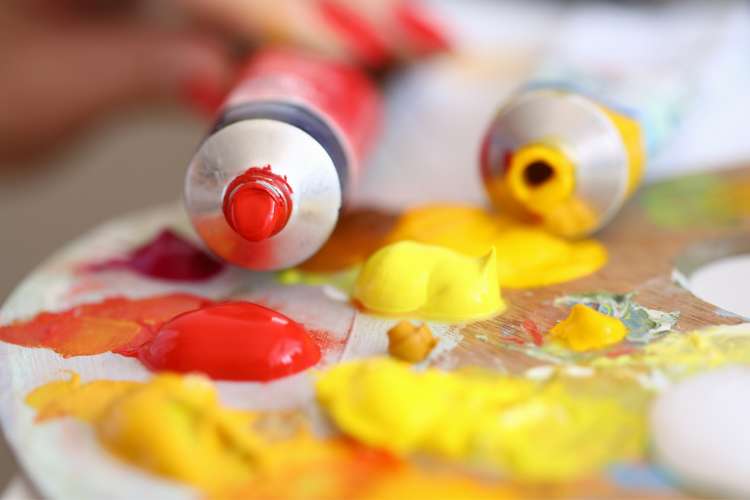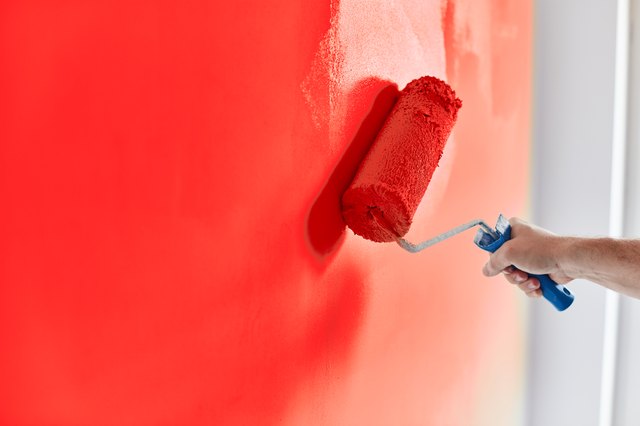To make a darker red, you can follow these simple steps. First, choose a red dye that is known for creating deep colors, like a reactive dye. Second, increase the amount of dye you use in your dyeing process.
The more dye you add, the darker the red will become. Third, make sure to follow the recommended instructions for fixing the dye to the fabric. This helps the color stay vibrant and long-lasting.
Finally, consider using techniques like immersion dyeing or tie-dyeing to enhance the richness of the red. By combining the right dye and techniques, you’ll achieve a beautiful and darker shade of red on your fabric.
The Color Wheel and the Components of Red

The color wheel serves as a fundamental tool in understanding the relationships between different colors. It consists of primary colors (red, blue, and yellow), secondary colors (orange, green, and purple), and tertiary colors.
This circular arrangement showcases the progression and interaction of hues. In the context of red, it stands as a primary color, signifying its pivotal role in color theory.
Components of Red
Red, as a primary color, holds intrinsic qualities that make it a powerful and expressive hue. It is associated with warmth, passion, and intensity.
Manipulating the components of red involves adjusting its characteristics through variations such as tint, shade, and tone. Tint involves adding white to create a lighter version, shade entails the addition of black for a darker appearance, and tone incorporates the addition of gray to achieve subtler nuances.
How the Addition of Certain Colors Can Influence and Deepen Red Hues
Complementary colors are pairs positioned opposite each other on the color wheel. In the case of red, green is its complementary color. When red is mixed with a touch of green, the colors neutralize each other, resulting in a deeper, more sophisticated red. This technique is particularly effective for achieving rich and balanced tones.
Analogous Colors
Analogous colors, located adjacent to each other on the color wheel, offer another avenue for influencing red tones. Combining red with analogous colors, such as orange or purple, introduces subtle variations in the red spectrum. This approach allows for the creation of nuanced shades, ranging from warmer to cooler tones, depending on the selected analogous hues.
Color Temperature
Color temperature, categorized as warm or cool, plays a crucial role in shaping red hues. Introducing warm colors like yellow or orange intensifies the vibrancy of red, creating a lively and energetic palette.
Conversely, incorporating cooler tones such as blue or purple deepens the richness of red, fostering a sense of sophistication and depth. Mastery of color temperature provides artists and designers with a versatile toolkit for manipulating the emotional impact of red.
Natural Ways to Darken Red
Natural ingredients, particularly fruits and vegetables, offer an array of pigments that can be harnessed to darken red tones. For example, berries, pomegranates, and beets contain natural dyes that contribute to the color spectrum.
To extract these natural dyes, a process called maceration is often employed. This involves crushing or soaking the chosen fruits or vegetables to release their pigments. The extracted liquid is then used as a dye to impart color to various materials.
Different fruits and vegetables yield varied shades of red, and experimentation with combinations allows for customization. The inherent complexity of natural pigments contributes to the richness and uniqueness of the resulting red hues.
Tips for Extracting and Applying Natural Dyes for a Darker Red
Preparation and Mordants
Proper preparation is key to successful natural dyeing. Mordants, substances that help fix the dye to the material, play a crucial role. Common mordants include alum, iron, and copper, and their use influences the final darkness and permanence of the red color.
Understanding pH Levels
pH levels affect the outcome of natural dyeing. Adjusting the pH with substances like vinegar or baking soda can shift the resulting red shades. Acidic conditions often produce brighter reds, while alkaline conditions can yield deeper and darker hues.
Fabric and Material Selection
Different fabrics and materials respond differently to natural dyes. Experimentation with various textiles allows for a broader exploration of shades and textures. Cotton, wool, and silk, for instance, may each absorb and retain natural dyes distinctively.
Layering and Repeated Dyeing
Achieving a darker red often involves layering or repeated dyeing. This process allows for building up the intensity of the color gradually. Each layer contributes to a deeper saturation, resulting in a more profound and long-lasting red.
Color Mixing Techniques for Artists

Artists often begin their exploration of color by delving into the color wheel. This circular tool showcases the relationships between colors, illustrating primary colors (like red), secondary colors (formed by mixing primaries), and tertiary colors (created by combining primary and secondary colors). The wheel serves as a guide for artists to mix and create an extensive range of hues.
Primary, Secondary, and Tertiary Colors
Red, being a primary color, holds a special place in color mixing. When combined with other primaries (blue and yellow), it forms secondary colors (green and purple). Additionally, mixing red with its complementary color, green, can produce tertiary colors, broadening the artist’s palette.
Color Bias and Temperature
Artists must also consider color bias and temperature. Every paint color has an undertone or bias, affecting its appearance when mixed. Red hues may lean towards warm or cool tones, influencing the mood of the artwork. Mastery of color temperature allows artists to convey specific emotions or atmospheres through their creations.
The Use of Complementary Colors to Darken Red Shades
Complementary Color Dynamics
Complementary colors, found opposite each other on the color wheel, exhibit dynamic interactions. For red, green serves as its complement. When these colors are mixed, they neutralize each other, creating a desaturated tone.
Artists leverage this dynamic to deepen and enrich red shades, producing visually engaging and complex hues.
Balancing Brightness and Depth
Using complementary colors strategically helps artists strike a balance between brightness and depth. Introducing a touch of green to red not only darkens the hue but also introduces subtle complexities. This approach allows artists to move beyond flat colors, infusing their works with visual interest and depth.
Creating Harmonious Compositions
The use of complementary colors contributes to the creation of harmonious compositions. By understanding how these color pairs interact, artists can guide the viewer’s eye, create focal points, and evoke specific emotions. The skillful integration of complementary colors in artworks adds a layer of sophistication and intentionality.
Which dyes work best for achieving a darker red on fabrics?
To achieve a darker red on fabrics, several types of dyes are effective, each with its own characteristics.
Reactive Dyes
Suitable for: Cotton, linen, rayon
Reactive dyes are known for their exceptional vibrancy and colorfastness. When applied to fabrics like cotton, they chemically bond with the fibers, resulting in deep and long-lasting red hues. For a darker red, using a higher concentration of reactive dye and following recommended fixation processes is essential.
Direct Dyes
Suitable for: Cotton, silk, wool
Direct dyes are versatile and can be used on various natural fibers. They offer simplicity in application and can produce deep colors. To achieve a darker red, it may be necessary to increase the dye concentration and consider additional steps for fixing the color.
Procion Dyes
Suitable for: Cotton, rayon, silk
Procion dyes are popular in fabric art, especially tie-dyeing. Known for their vibrant and intense colors, Procion dyes allow for creativity in achieving various patterns. To deepen the red, increasing the dye concentration and ensuring proper fixing, often with soda ash, is important.
Acid Dyes
Suitable for: Wool, silk
Acid dyes work well on protein-based fibers like wool and silk. They are effective in producing rich and deep colors. To achieve a darker red, an acid dye bath is commonly used, and careful control of acidity levels contributes to the intensity of the color. However, acid dyes are not suitable for plant-based fibers like cotton.
Natural Dyes
Suitable for: Cotton, linen, wool
Natural dyes derived from plant sources offer an eco-friendly option for achieving red tones. Materials like madder root, cochineal, or Brazilwood can produce deep and earthy red hues. Achieving a darker red with natural dyes may involve additional steps, including mordanting and post-dye treatments.
FAQ
What colors make darker red?
To darken red, you can add black, brown, or gray. This principle applies to both art and the color of blood, which can darken due to low oxygen levels.
What can I mix with red dye to make it darker?
Intensify red dye by adding vinegar, lemon juice, or coffee. These substances can interact with the dye, deepening its color.
Which two colors make red?
Red is a primary color and cannot be made by mixing other colors. However, you can alter its shade by adding different colors.
Can blood be dark red?
Yes, blood can be dark red. This usually happens when blood oxidizes and loses some of its oxygen-carrying capacity.
Is dark red blood unhealthy?
Dark red blood can indicate health issues, as it often signifies low oxygen levels. It could be a sign of conditions affecting the heart and lungs.
What color of blood is healthy?
Healthy blood is bright red, indicating high oxygen levels.
Is thick red blood healthy?
Thick red blood can indicate a high red blood cell count, which can be a sign of certain health conditions.
Why is my blood very light red?
Light red blood can indicate a high oxygen level. However, if it’s too light, it might be a sign of certain health conditions.
Final thoughts
On the whole, making a darker red is a creative process that involves choosing the right dye, adjusting the quantity for richness, and following proper fixing steps. Whether you’re dyeing fabrics for art or personal projects, experimenting with techniques like immersion or tie-dyeing can add extra depth to your reds.
Remember to enjoy the process, be patient, and have fun creating beautiful and vibrant shades of red. With these simple tips, you’ll be able to achieve the darker red you desire on your fabrics. Happy dyeing!

